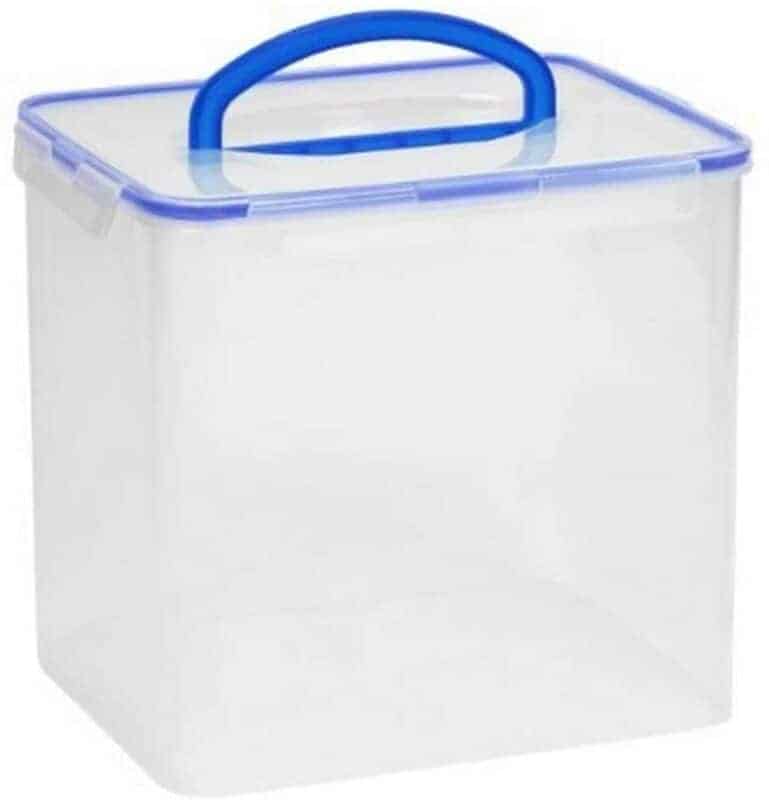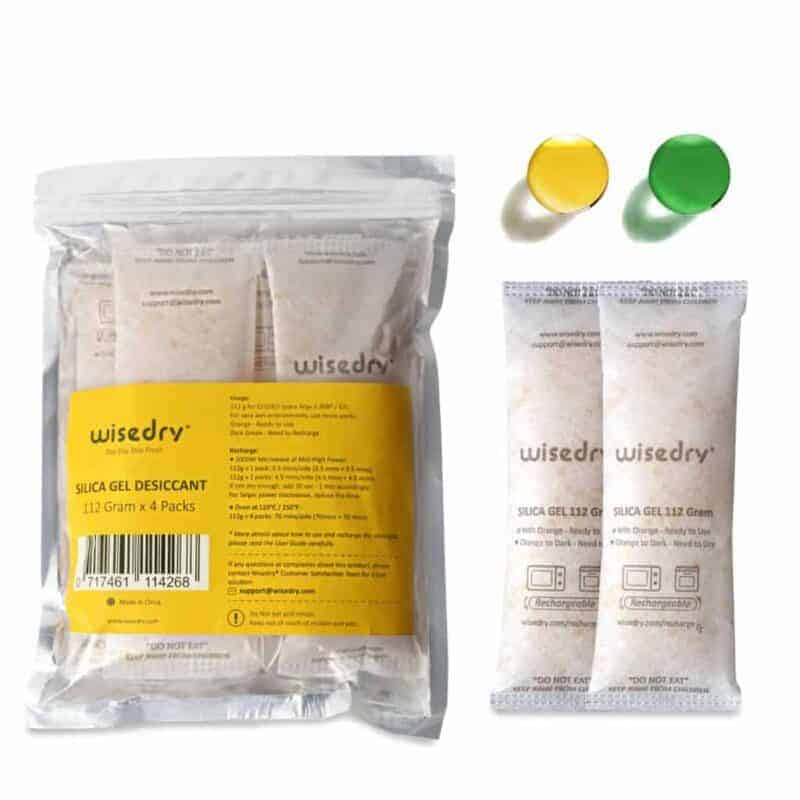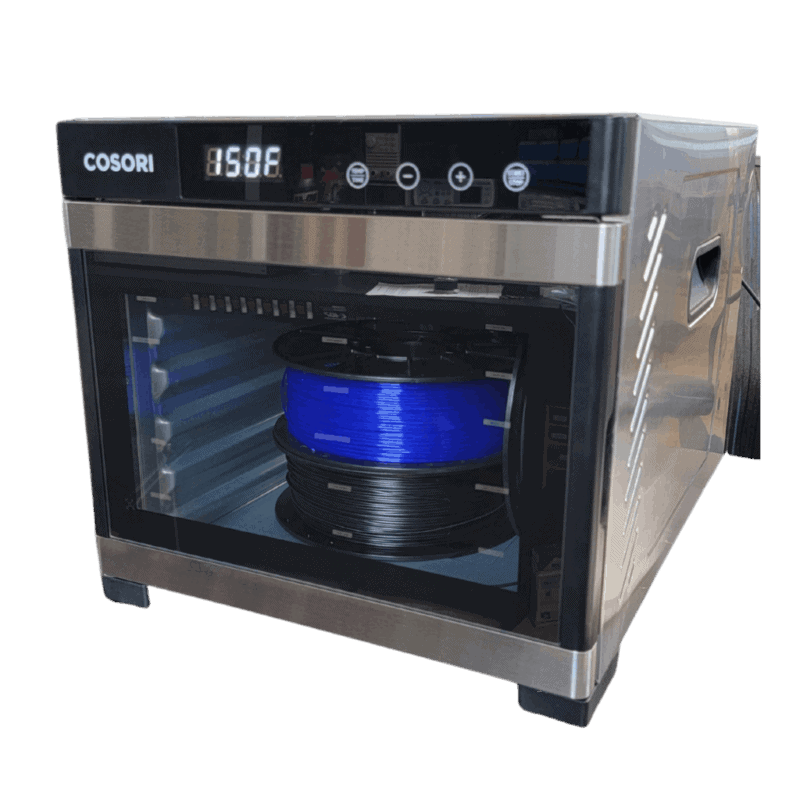Intro #
All filaments will absorb moisture to some degree PLA and ABS are not too terrible when it comes to picking up moisture from the air but other filament types like Nylon, TPU, TPE, and PETG pick up moisture fairly quickly. This article is going over what tips, tricks, and equipment you can use to keep your filament in top printing shape.
Prevention #
The best way to prevent the filament from picking up moisture is to keep them in a sealed container with the little desiccant packet that came with the filament. The packet will not pull the moisture out of the filament but will keep the ambient humidity inside the container (or plastic bag) at a low level.

PLA and ABS can be OK to store outside a bag or container for longer periods if you live in a climate with low RH, but it never hurts to keep them sealed up with desiccant. Some PLA filament brands (usually ones made in China) can crack and/or become brittle if left out for even a few days.
If you are looking for an airtight container that holds up to 2x 1KG rolls, we use these: https://amzn.to/3t9bAv8. You can also put desiccant in the bottom of the container to keep the filament dry: https://amzn.to/3d9t2da. If you need to do a lot of bags/containers you can get organza bags and bulk desiccant to make your own bags on the cheap.

Drying Tools #
There are commercial solutions (like PrintDry) available to dry filament but they are basically food dehydrators with special inserts and cost more than even a higher-end food one. We have a cheaper one that we clipped the trays on and a larger, metal one that required no modification to use and looks great.
The main thing to look for when looking for a dehydrator is if it has a temperature selection knob. A nice feature to have on the higher-end ones is a timer so it stops heating once the timer runs out. We’ve linked 2 that we use below. One requires clipping the trays to remove them, the other is a higher-end unit that does not require any modification to use and looks professional.

- Large, Plastic Dehydrator: https://amzn.to/3uEWeyP
- Pros: Cheap (~$50), Holds 2-3 Rolls of filament
- Cons: Requires modification of the trays (remove them, keeping the outer sleeve) to use
- Larger, Metal Dehydrator: https://amzn.to/3a2ZEDz
- Pros: No modification needed to use, looks professional, holds 4-6 rolls, and metal construction
- Cons: Higher price (~$150)
Temperatures and Drying Times #
Once you have a way to dry your filament, you will need to set the unit to the correct temperature and allow time for the filament to dry. Below are recommended temperatures and drying times for various materials. The most important thing is to keep about 10-15C under the “glass transition” temperature of the filament you are drying. The “glass transition” temperature is the temperature at which the filament becomes soft at.
| Material | Temperature | Drying Time (Minimum) |
| PLA/HTPLA | 40-45°C (104-113°F) | 8-10 Hours |
| TPU/TPE | 55-60°C (131-140°F) | 6-8 Hours |
| ABS/ASA | 55-60°C (131-140°F) | 2-3 Hours |
| PETG/PCTG | 65-70°C (149-158°F) | 2-4 Hours |
| Nylon | 65-70°C (149-158°F) | 12-14 Hours |
| Desiccants | 70-80°C (158-176°F) | 4 Hours |
These settings are what we found work best. Drying for longer than needed will not hurt the filament. You can also use a dehydrator to renew/”recharge” your desiccant packets over and over again. The ones linked above change color when they need to be dried out to keep working correctly.
Affiliate Link Disclosure
Amazon links are affiliate links. They do not cost you more to use and help us out by giving us a commission if you buy something from the link.



